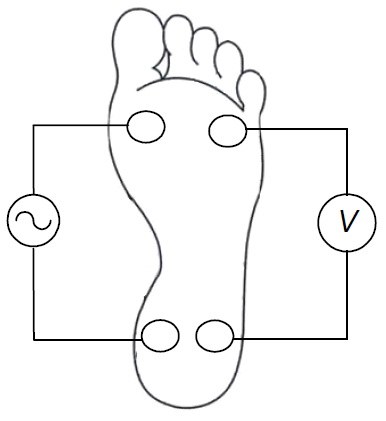Cardio-respiratory monitoring by bioimpedance measurement in a single foot
|
A measurement method able to detect the heart rate, the respiratory rate and the pulse arrival time from bioimpedance measurements in a single foot has been patented and developed. The method can be applied to spot measurements or continuous monitoring, in resting conditions, and only needs to establish a mechanical contact with some electrodes in either a platform or a suitable garment, such as a sock. No other action from the patient is required hence it suits remote monitoring at home and spot measurements anywhere. Partners to further develop the device and/or to establish commercial agreements along with technical cooperation are sought. The ChallengeThere are not many devices available intended for long-term monitoring or spot measurements in subjects that need some periodic control but do not have any identified major health risk. Spot measurements can be performed by using a common household device such as a modified bathroom scale. However, this is less convenient for people with limited motor control, and cannot be used for continuous monitoring. Further, some methods for heart rate detection in weighing scales do not work for people with a single foot. The proposed method measures electrical impedance changes in a single foot, and works regardless of the body position, provided a mechanical contact is kept between the foot and the electrodes. This can be obtained with an innersole, or a suitable garment such as a sock. The TechnologyAn ac current is applied to the foot using two electrodes and the drop in voltage is measured using two different electrodes. The signal is amplified, demodulated, amplified again and high-pass filtered to extract the pulsating impedance component attributable to the arrival of the arterial pulse wave at each heart beat. Peak amplitude variations of that component follow the respiratory cycle. The time interval between a fiducial point such as the R wave from the ECG or the J wave of the BCG and a convenient point from the pulsating impedance component is the pulse arrival time (PAT). Innovative advantages
Current stage of developmentPrototype available ready for testing on patients. Applications and Target MarketThis technology could be of interest for companies devoted to manufacturing equipment for home health care, fitness control and smart weighing scales.
|
Reference number MKT2011/0034_H
|
|---|


Share: